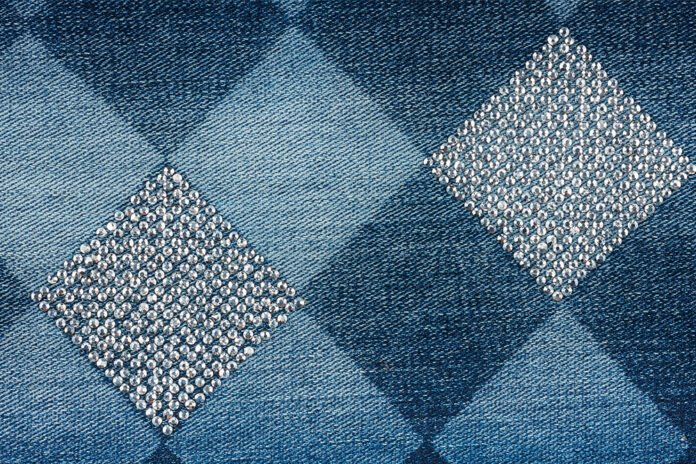A game-changing technology for ‘deepfake’ jeans is in the air. The new textile coloration technology has made it possible. A pair of vintage jeans is scanned and transferred to the printer, laser cut and sewed.
These digital-age jeans are fully printed with authentic-looking fading. It needs an indigo warp-dyed fabric. The digital printing of textiles has been a breakthrough technology. It is a high level of process automation and releases no discharge, it is considered efficient, economical, and eco-responsible. It is a new digital tool that the industry now uses widely, 3D fashion design software and laser machines have also profoundly changed how products are conceived and manufactured in today’s modern Industry 4.0 factories.
One such solution was introduced by Singapore-based NTX introduced last June under the patent of Cooltrans ‘textile coloration technology. The process was developed with Stella Blu, a division of China-based Prosperity Textiles, and the two companies have now formed a joint venture. They believe they have a solution that reproduces strikingly authentic-looking fading on jeans, front and back, in a single pass. The developers claim that the application’s precision can go up to 3200 dpi. This AI-driven process uses standard dyes and is discharge-free.
It was first developed for man-made cellulosic and synthetic fabrics, and now Cooltrans can print on cotton grounds. The technology developed by NTX is a modified transfer print. According to developers, the face of the fabric is printed using a transfer film and the back is a direct-to-fabric print. With this there will be no conventional wet processing in denim fabric manufacturing and garment laundering and finishing, making it a waterless and low-energy solution.
The Chinese partner says that it is just the start of the journey to printing denim and it is not traditional denim but an addition to denim types which would be appreciated by eco-aware consumers. It usually takes 60 to 120 days to go from idea to finished product. This system brings these down to 60 days. It makes the traditional methods of obtaining aged effects obsolete.
Companies specializing in denim have been investigating the technology for years, as has Gonser Group, based in Tunisia, with headquarters in Germany. Originally a denim laundry, it has evolved to become a vertically integrated denim and jeans manufacturer. The development of its patented Mimikry technology is now up and running at its Gonser Denim Revolution facility, in Tunisia.
In development for several years, the company has made significant progress in improving the technology, thanks in part to the creation of a dedicated department covering all processes, from file design and pattern-making to printing. Technical details have also been ironed out.
Turkey-based Ereks Blue Matters has in-depth experience with a similar technology based on lasering fadings on a denim fabric before sewing. Experts believe that printing may help reduce lead times and be suitable for on-demand manufacturing, but it is yet to be established what the capacity of this technology is and if it can replace bulk production or is more adapted to smaller batches.
Experts say that emulating indigo using printing cannot be an easy task. The more dye you apply, the more difficult it is to achieve varying shades of blue. Fading is another issue where printed denim may fall short of the real thing. True jeans wear down with wearing and washing, and as they do, they become more comfortable to wear and that’s why we love them. If printed jeans do not wear down well, will people keep them for a long time? On the plus side, he notes that it is very difficult to control fading in traditional laundry processes.
Achieving the aesthetics of a genuine pair of old and worn-in jeans, and reproducing indigo’s tendency to fade into myriad shades of blue is one of the main challenges that digital printer makers face.
Printers apply ink to a fabric and it is not easy to achieve that same look and feel. The solution is to apply just the right amount of ink to get the right shade or coloring. The second key challenge that printing technologies must overcome is the critical matter of scale. At the current relatively small volumes NTX is producing, which are under 500 meters, there will be no problem. The real success would come when it works on larger batches.
In potential water, chemicals, and energy savings, printing is beyond question a more sustainable solution. Water savings are in excess of 90 percent, as it rules out laundering, and brands may also be happy to see their carbon footprint lower by 66 percent at the very least. One developer estimated that its processes save up to 95 percent of water usage and 85 percent of energy compared to a full range of traditional jeans finishing processes.
A nearly one-step process, printing no doubt makes it easier to offer customized designs and limited editions. Mimikry can contribute to faster sampling but it can also help young designers develop their own products; ultimately it makes jeans making more democratic. The adoption of digital printing is a new creative option.
For boutique denim labels, the technology could thus open new design possibilities and simplify the production of small runs. It is probably a long way from offering mass-market brands a solution that can replace current practices. It could, however, find its place in the market, with the creation of an entirely new product category. Something like deepfake jeans or jeans-like tops and bottoms with fadings and markings that a traditional laundry might not even be able to reproduce.



